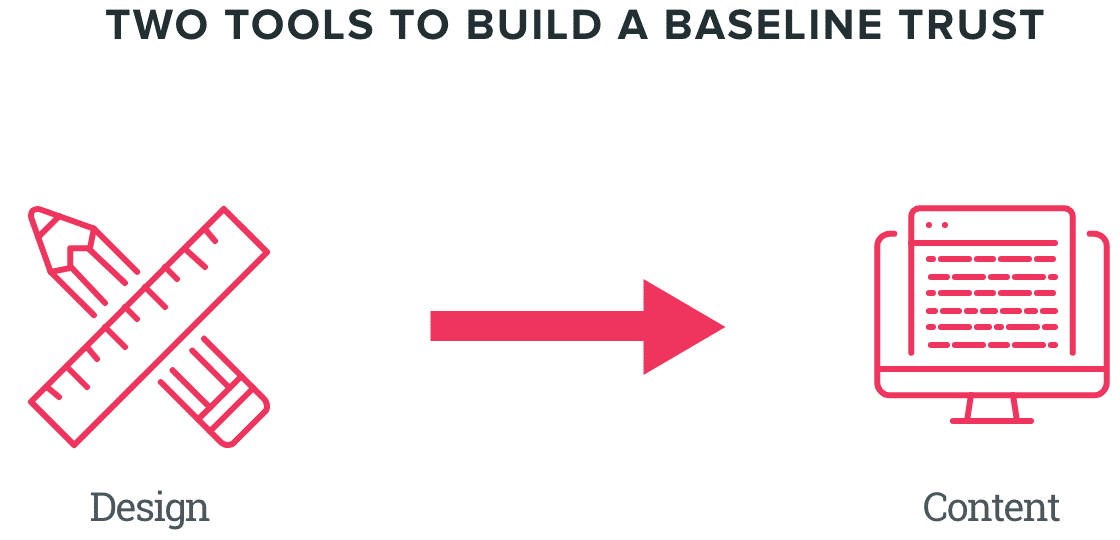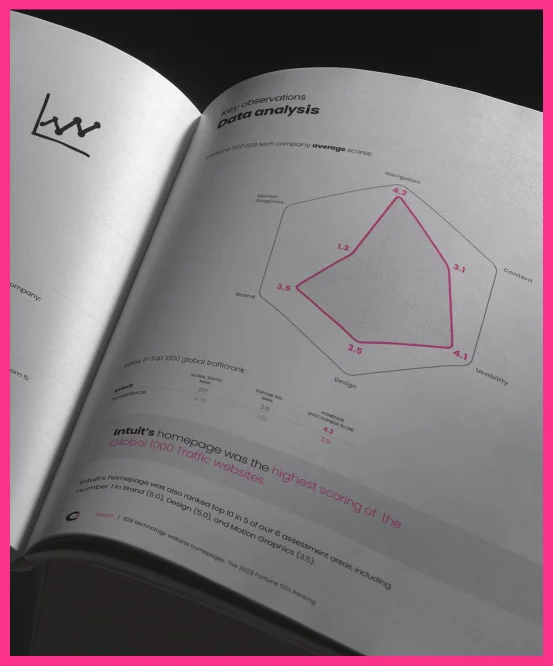The secret to generating leads for your business doesn’t hinge on topping every search engine results page (SERP) or executing the perfect paid media campaign. Both elements provide real advantages, but B2B customers still require months of deliberation before deciding to become a customer. If your website doesn’t effectively establish a level of trust with users at the early stages of their journey, then all your other digital marketing strategies go to waste.
Trust is a prerequisite for any successful relationship, and your firm’s website is an essential tool for establishing that connection with prospects. In a business climate driven by strong digital experiences, your website creates a powerful first impression with visitors. You need to ensure that impression sets the foundation for a relationship that’s built to last.
Market and Demographic Shifts Increase the Focus on Digital Connection
The pandemic underscored the critical importance of a strong digital marketing strategy, especially for firms dependent on in-person events to create sales leads. But as signs of normalcy return, the value of an effective website that connects with users has only grown more important.
One research report revealed transformative changes to consumer habits in the B2B tech sector in 2021. Buyers view vendor websites as their second most important research tool before making a purchase ranking only behind a product demo. Plus, changing demographics among consumers have fueled a growing emphasis on digital browsing.
Further, Millennials (those between 25 to 39 years old) now make up 60% of tech buyers — and this population is 2x more likely to discover a product by searching online. As a whole, 87% of tech buyers reject traditional sales methods in favor of a self-serve buying journey, and 57% make a purchase without ever talking with a representative.

To stay competitive, your website needs to offer persuasive reasons why a prospect should work with your firm. And those reasons are built on trust.
B2B Website Visitors Must Progress Through a Hierarchy of Trust
Your sales teams may argue any web design hinges on creating a clear path to conversions. But according to Nielsen Norman Group, your site needs to build a foundation of trust before any call to action is answered.
Before any prospect engages with your firm, your site must satisfy five levels of trust:
How to Build a Baseline of Trust with Your B2B Website
Too many B2B firms assume prospects come to their site having already reached Level 3. But with user privacy protections a growing concern, your prospect’s contact information is more guarded than ever. Customers won’t share their information unless they trust that your firm will provide what they need in return.
You have two tools to satisfy the first two levels of trust for your prospects: Design and content.

Clear Design Demonstrates Credibility for Your B2B Business
Visual design plays a crucial role in establishing a credible first impression with your users. One study found that close to 50% of website users consider design the strongest indicator of its credibility.
Even at a subconscious level, your brain draws a correlation between the logic in what you see on a website and your expectations for how it should function. When your site’s design is working, your customer may not even notice how its elements complement one another. Everything just functions as it should.
Can your site help users meet their goals? Do users feel your firm is credible and understands their best interests?
For B2B buyers, their standards for design best practices grow more sophisticated than the average user, especially in the technology sector. Your site shouldn’t look like your competitors, but it should look right for your industry. Periodically, you and your design partner should conduct a competitive analysis to ensure your website is still reflecting your business in a way that’s consistent with your brand as well as today’s design norms.
A few design considerations include:
-
Consistency
Is your visual brand identity and messaging concise and clearly expressed on every page?
-
Graphic Elements
Does every image and illustration support your brand and its positioning without looking generic or obscuring important content?
-
Information Architecture
Are all of your user journeys in alignment with expectations for your firm’s industry? Do your users recognize how to find what they need?
-
Layout
Is every page facilitating each user’s journey with an intuitive page design with clear and recognizable calls to action?
Effective Content Forms the Foundation of User Trust
Your content plays a critical role in forming a connection with your audience. But firms often make a common mistake of using their website to only talk about their own capabilities and achievements. B2B buyers don’t want to read that — they need to know how your firm will resolve their problem.
For all the best practices you need to follow with your web design, your website needs to do more than connect with the faceless brand logos that make up where your prospects work. You need to ensure all your content is focused on the people reading it rather than your company’s internal priorities.
Your firm’s website is an essential tool for establishing that connection with prospects.
Along with keeping your users pain points as a top priority, your content should also build trust by satisfying the following content priorities:
-
External Validation
Analyst reports, industry certifications, and awards demonstrate the value of your services from independent sources.
-
Customer Validation
Case studies, user success stories, and testimonials provide critical support to the expertise of your firm. Plus, your users will see their own potential success in reviews provided by customers who resolved similar problems by working with your firm.
-
tHOUGHT lEADERSHIP
Blog articles, white papers, eBooks, and infographics published by your firm’s experts offer further validation that users have come to the right place.
-
Rich ‘About’ Pages
Is every page facilitating each user’s journey with an intuitive page design with clear and recognizable calls to action?
Once your audience understands who you are, what you have to offer, and why yours is the best choice as a partner, you’ll have taken steps toward earning their trust. Where your working relationship goes from there is ultimately in your hands.






